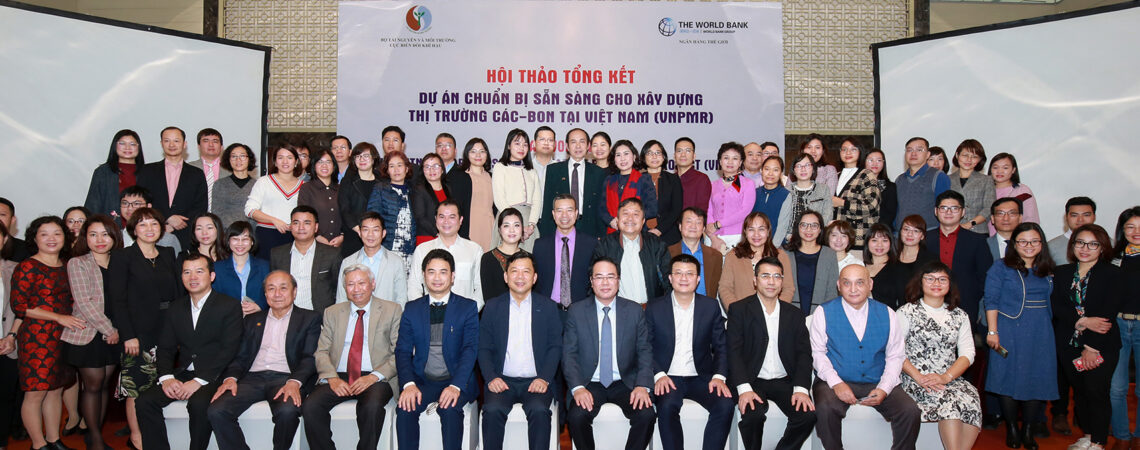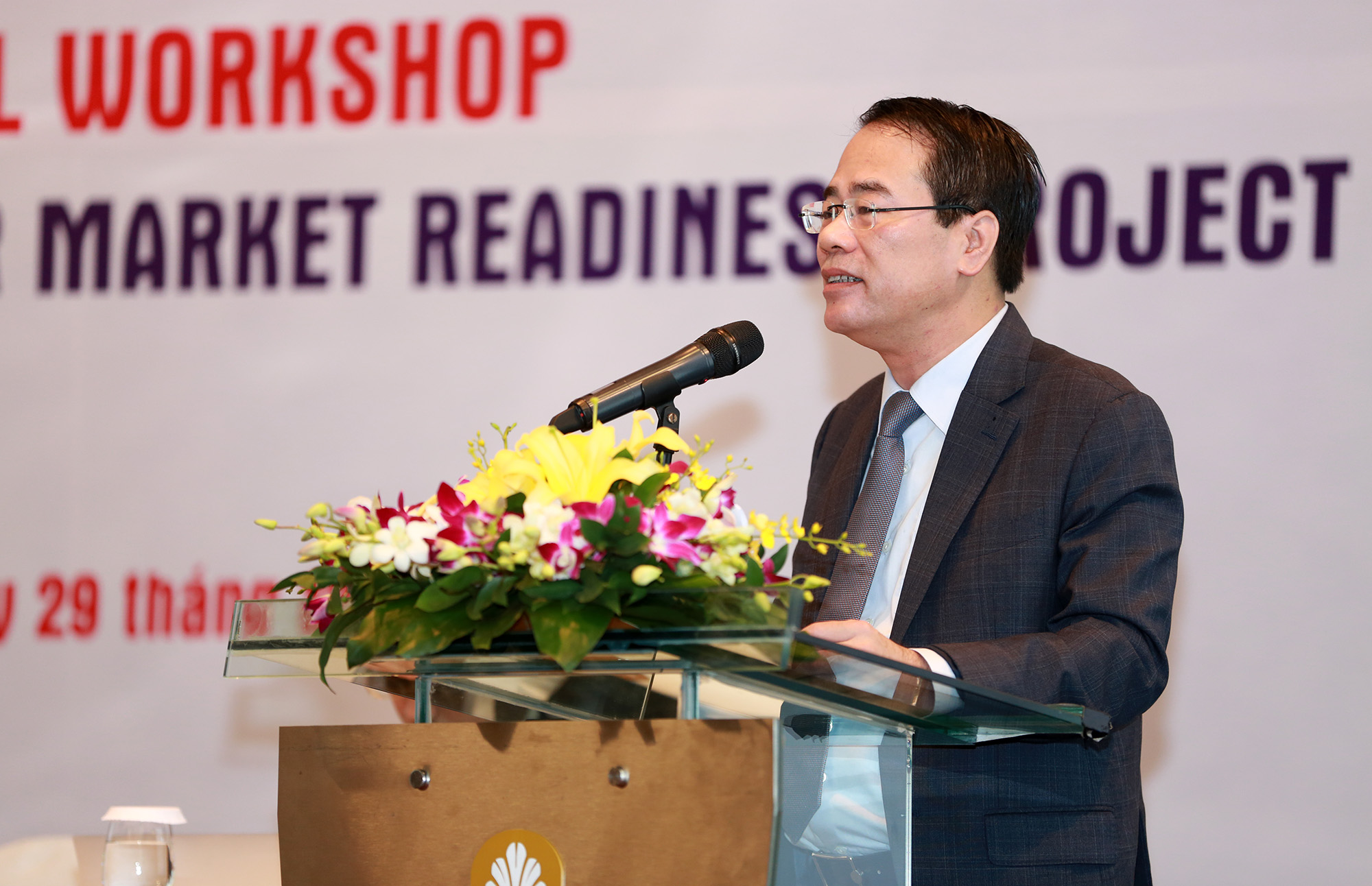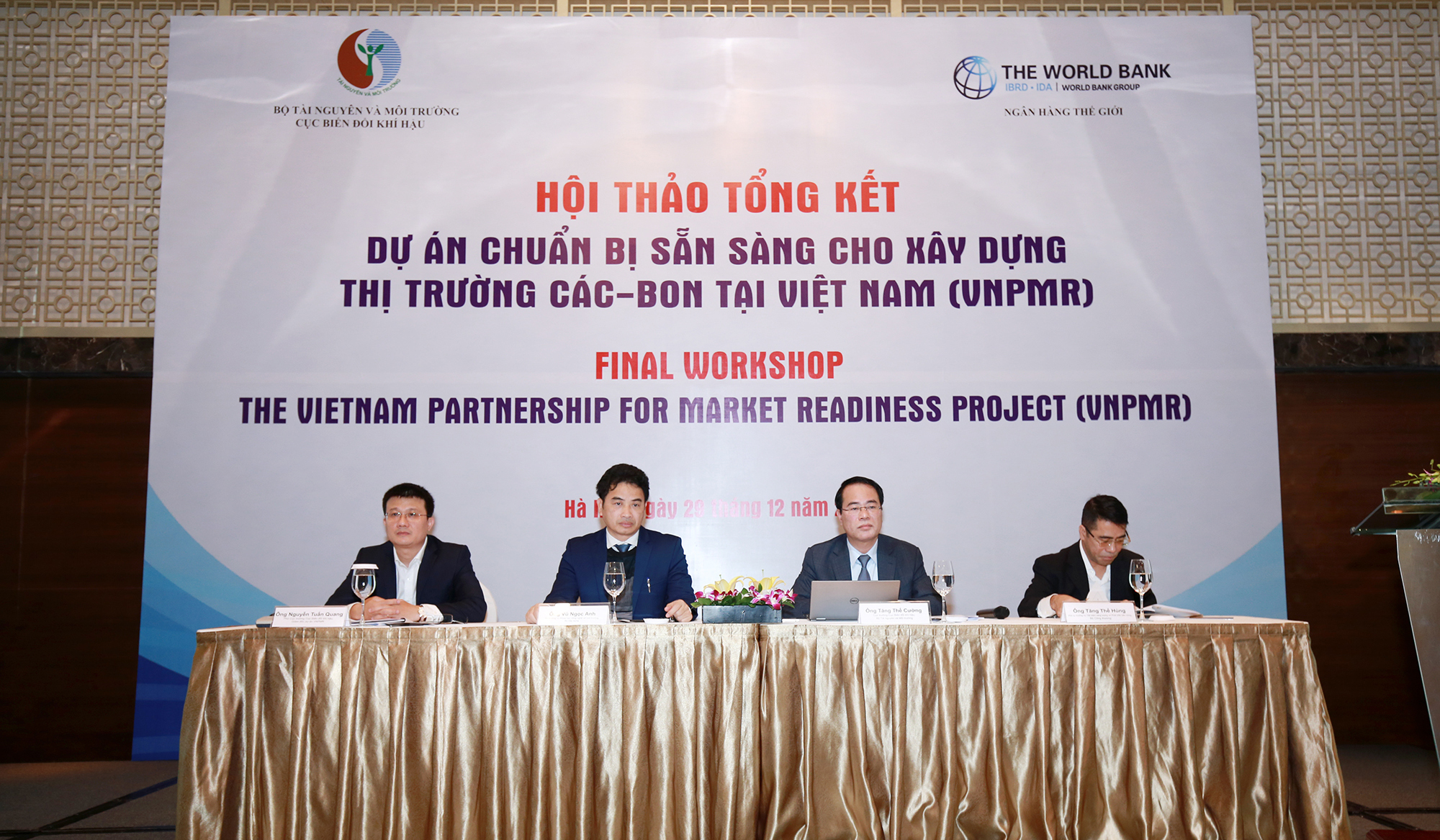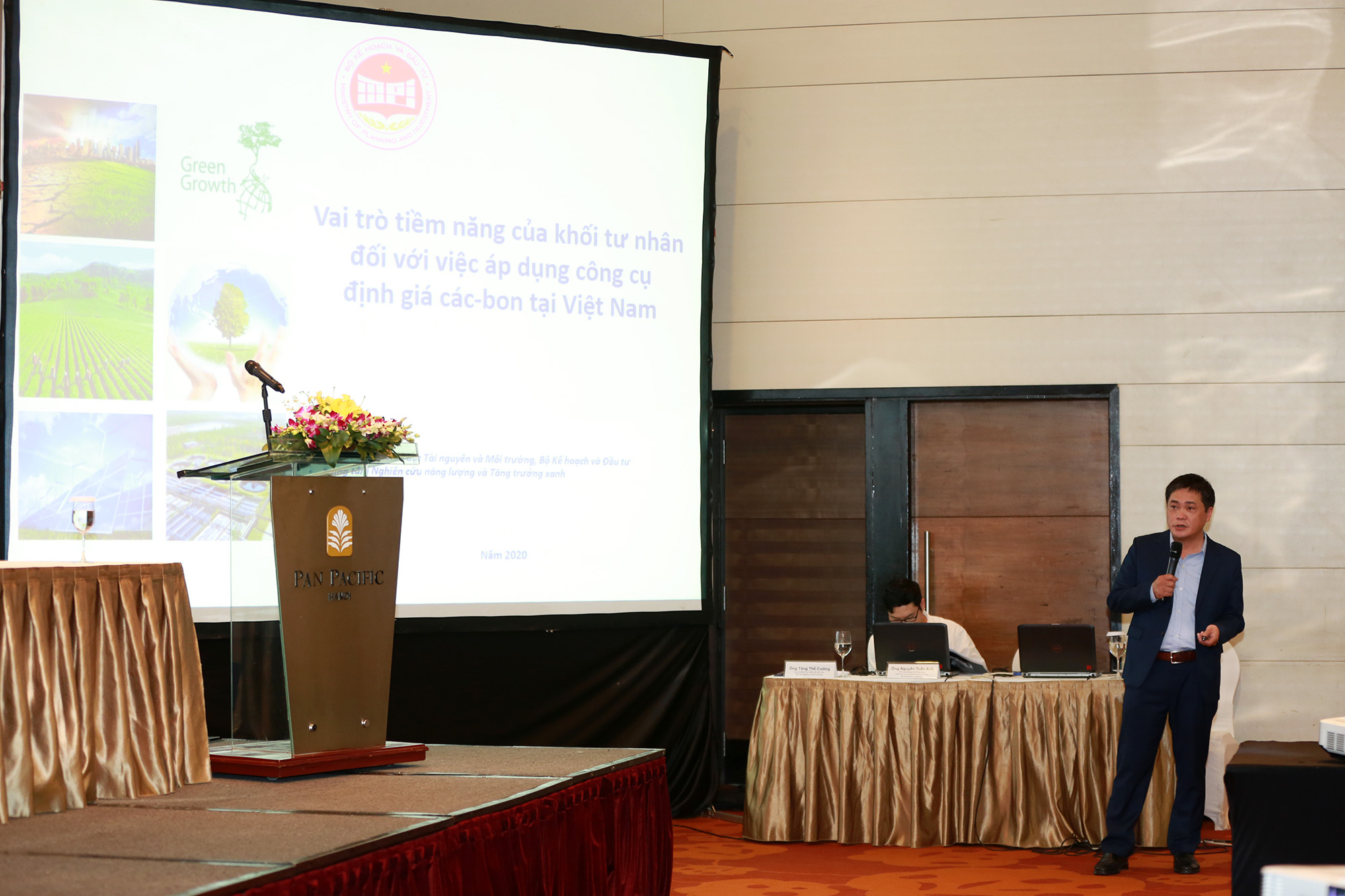The project “Getting ready for the carbon market in Vietnam” (VN-PMR Project) was started in 2015 funded by the World Bank and has the participation of the Ministries: Planning and Investment, Finance Main, Industry and Trade, Construction. Within the framework of the VNPMR project, many in-depth studies aimed at proposing policies and state management tools on carbon markets have been proposed, including credit creation mechanism, emission transaction system (ETS), fees/carbon tax, and green certification scheme. These are also carbon pricing tools with an approach using market mechanisms that follow the principle of “polluters pay”. Accordingly, emission facilities are responsible for the costs of releasing GHGs into the atmosphere.

After 5 years of implementation, up to now, the project has made basic preparations, paving the way for the formulation of carbon market policies.
Speaking at the conference, Dr. Tang The Cuong, Director of the Department of Climate Change (Ministry of Natural Resources and Environment), said that currently, according to international organizations, greenhouse gas emissions per capita in Vietnam have been 6 times higher than in the early 1990s. Vietnam has a total emission of about 285 million tonnes of CO2 equivalent. This figure, according to the normal emission scenario, calculated by the Ministry of Natural Resources and Environment in coordination with ministries, sectors, and localities, will reach 927.9 tons of CO2 equivalent by 2030.
In the updated Nationally Determined Contribution (NDC) to the Secretariat of the Framework Convention on Climate Change last September, Vietnam determined to reduce 9% of total emissions by 2030 with domestic resources. and can be reduced by up to 27% with international support. To achieve this goal, financial resources need up to tens of billions of dollars. One of the ways to mobilize social resources in a transparent and flexible way is carbon pricing, including carbon taxes, credit mechanisms, and a system of exchanging a house gas emission quota. glass and carbon credits.
The VN-PMR project sets out to strengthen capacity, developing and disseminating state management policies and tools for greenhouse gas emission reduction activities in accordance with national conditions (NAMA), forming a market tool, piloting a NAMA to generate carbon credits, and building a roadmap for domestic and international carbon market participation.
Currently, the draft Decree regulating greenhouse gas emission reduction, ozone layer protection, and carbon market protection, to guide the implementation of the Law on Environmental Protection (amended) 2020, has basically regulated is responsible for the inventory, reporting, and verification system (MRV) of ministries and agencies. It also establishes a domestic ETS emission trading system that defines the responsibilities and benefits (in the form of a number of tax incentives, investment, etc.) of the parties concerned.
In addition, it is expected that the Government will issue a Decision on the list of fields and generating facilities to carry out GHG inventory in 2021. These facilities will participate in ETS. The project has also proposed a specific roadmap for the implementation of voluntary ETS transactions by 2027 and mandatory transactions from 2029.

Mr. Cuong stated that Vietnam would continue to participate in the “Carbon Market Implementation Partnership” (PMI) program initiated by the World Bank to form and develop carbon markets in the future. This is the next phase of VN-PMR to deploy market tools in the participating countries of the Program.
Source: Hanoi TV





